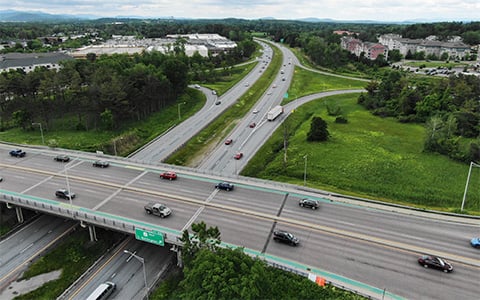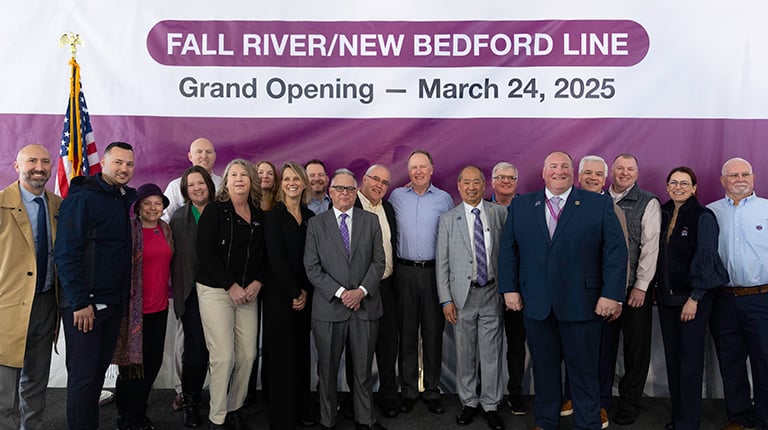
The I-89 Exit 14 Scoping Study is an exciting and transformative initiative led by the Chittenden County Regional Planning Commission (CCRPC) aimed at significantly enhancing transportation in Vermont. This comprehensive project seeks to evaluate and propose alternatives for the I-89 Exit 14 interchange, addressing critical issues such as vehicular capacity, geometric layout, multimodal accessibility, and safety, while also prioritizing the decarbonization of construction processes. The concept of decarbonizing infrastructure through scoping and design is relatively new, and VHB is at the forefront of this initiative within the industry.
To decarbonize infrastructure, the team focused on understanding the embodied carbon potential of the project. Embodied carbon includes the carbon emissions associated with the entire lifecycle of the materials used to build infrastructure, including material extraction, manufacturing, transport, construction, and disposal. Transportation Engineer Cierra Ford, PE, ENV SP, with support from Carbon Reduction Lead Ken Donald, PE, developed an embodied carbon calculator that can baseline the carbon emissions. The carbon template used to calculate the embodied carbon potential is part of VHB’s embodied carbon pilot program. In alignment with the American Society of Civil Engineers 73 Standard, this program promotes sustainable construction by estimating and managing emissions from the start of a project. This information informs design decisions and incentivizes sustainable material choices and construction methods. VHB’s program also encourages conducting embodied carbon analyses for proposed design alternatives to identify options that minimize the overall carbon footprint of a project.
For the I-89 Exit 14 Scoping Study, VHB is evaluating various interchange options, with an emphasis on improving bike and pedestrian accessibility as well as vehicular flow. Following the recommendations of the I-89 2050 Study, this initiative is a crucial step toward achieving the long-term vision for the interstate corridor. Since the I-89 Exit 14 interchange serves as a gateway to South Burlington and the University of Vermont area, addressing existing challenges is essential for improving travel time reliability, reducing congestion, and enhancing safety for all modes of transportation, including cycling and walking.
A primary objective of the scoping study is to refine previously identified alternatives and explore new options that enhance connectivity and safety at the Exit 14 interchange. By clearly defining the project's purpose and need, developing alternative configurations, and evaluating trade-offs, CCRPC and its partners aim to identify a locally supported preferred alternative to recommend to the Vermont Agency of Transportation (VTrans).
The I-89 Exit 14 Scoping Study symbolizes a forward-thinking initiative aimed at transforming a critical interchange to better serve the needs of all users. VHB's introduction of embodied carbon calculations at the scoping phase enables practitioners to compare design alternatives while considering the carbon implications of each option. Incorporating this approach at the planning phase represents significant progress in sustainable infrastructure development, setting a benchmark for future projects and highlighting a shift toward a more sustainable and efficient transportation network. This initiative reflects the collaborative, evidence-based planning necessary to meet the needs of current and future generations.
For additional information on the I-89 Exit 14 Scoping Study, contact VHB Project Manager Karen Sentoff. For more on embodied carbon, connect with Cierra or Ken.
Learn more about VHB’s sustainability work.


